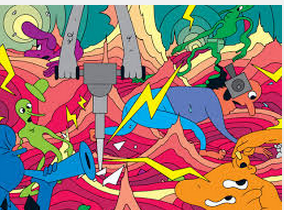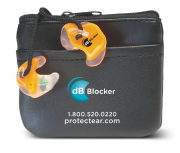NCHA Conference: Stop Gambling with your Hearing.
recap by Jeffery Goldberg
The 2014 conference of the National Hearing Conservation Association just concluded.
This year the conference was in Las Vegas which was, for a conference normally situated in smaller locations like St. Petersburg and Tuscon,  different. Because Las Vegas is home to massive conventions with hundreds of thousands of attendees, having a conference with 300 attendees not get trampled in the confusion is quite a feat (actually the conference was located in Summerlin, a retirement community northwest of Las Vegas).
different. Because Las Vegas is home to massive conventions with hundreds of thousands of attendees, having a conference with 300 attendees not get trampled in the confusion is quite a feat (actually the conference was located in Summerlin, a retirement community northwest of Las Vegas).
This year’s conference was focused on many aspects of the hearing conservation program but chief among the podium presentations was a focus on making and using hearing protection. Unlike previous years, there was much made of custom hearing protection as though this sometimes forgotten form of hearing protection had been recently rediscovered by researchers. Tracks for Musicians, the Military, and Audiologists also allowed those with special interests to delve into research in those fields. This conference was most illuminating shining a light on many areas of new hearing research.
NEW! at the NHCA 2014 Conference
As well, not on the podium but present was an exhibition accompanying the conference. Unlike some years past, there was new and exciting information this year.

Dr. Kevin Michael of Michael & Associate, introduced a new device for verifying the fit of ear muffs and showed updates to his popular FitCheck Solo Fit Testing Program (by way of full disclosure Custom Protect Ear (in Canada) and ProtectEar USA sell and train users for FitCheck Solo). There was much interest in FitCheck for Earmuffs as people have long looked for a way to determine if an earmuff was protective enough.
Also New at this years conference, was an introduction for digital scanning on the ear. Lantos Technologies showed their digital ear scanning device (one of 3 companies with such a device currently in development). Lantos has tapped Brian Fligor formerly of Boston Children’s Hospital as their Chief Audiology Officer. Brian has a long history are a preeminent research on matter of hearing conservation. His joining Lantos augers for an exciting introduction for this new technology.
3M and Howard Leight division of Honeywell we present with new types of hearing protection and Fit Testing systems on display. If you’re reading this blog, and have an interest in hearing preservation, you should think about becoming a member of the association. Check out their website at Hearingconservation.org .
Now you know that Disneyland is sometimes called the happiest place on earth. Well, the Rampart Casino in Summerlin, attached to the Marriott housing the conference, is its opposite – the unhappiest place on earth. No this is not sour grapes because I lost some money. In fact, I didn’t even play. This is my observation of the folks sitting in the casino, any time of the day or night, looking like they had or were about to loose their best friend. No matter when I walked through the casino (and in Las Vegas, architects have mastered designing the hotel so that everywhere you want to go is on the other side of the casino) I never saw a smile. Just folks sitting at slot machines and gaming tables wishing they were somewhere else but not having the ability to go there.
Next year, the NHCA conference is in New Orleans in February. If you have any interest, think about coming to check it out. You don’t have to join the Association to come to the conference (it is just cheaper if you do). Until next time…
Jeffrey Goldberg | President
Custom Protect Ear Inc.














